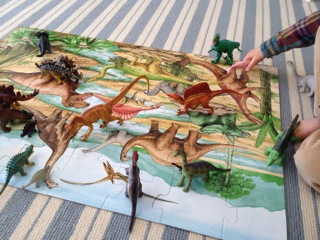 I promised to blog my way through Pam Marshalla’s book, “Carryover Techniques in Articulation and Phonological Therapy,” and I’m ready to tackle self-monitoring.
I promised to blog my way through Pam Marshalla’s book, “Carryover Techniques in Articulation and Phonological Therapy,” and I’m ready to tackle self-monitoring.
I realize as I work through this excellent resource, that after over 35 years of working with kids, I still feel confident on the specialized steps in teaching sounds but am appreciating being reminded of the critical steps to achieve the final stage of articulation therapy which is carryover. Somehow I feel sort of “finished” when a child can easily produce his target sounds in all positions of a word in sentences and even structured conversation. Some kids easily step over into using their new sounds daily while others need a step by step process to listen, monitor and correct their errors.
Pam makes the point that auditory monitoring should be taught early in therapy and continued throughout. I must say one of the first things I do with a new little client is see if he can distinguish correct and incorrect productions of his error sound. They really like pointing to one or the other of my hands as I speak into them.
How do we practically teach this? Today I applied Pam’s approach of teaching self-monitoring of speech through conscious awareness, which is key to carryover. Pam talks about asking your student why they have come to speech? They should be able to verbalize the purpose of their therapy–to fix their /r/ or correct their /s/ for example. I thought I was clear in my intentions and shocked today when I posed that question to a 5 year-old whom I had seen for a few months. He didn’t immediately come up with the sounds he was working on (actually he said a sound we had mastered first a few months ago). Embarrassed! So I stepped right in to help him write the letters for his sounds in glitter glue and discuss what he was learning to do to specifically make his sounds correctly. Phew. He was able to verbalize that! Then I read on about the importance of “checking devices” to record the number of errors they make in a certain amount of time to help build self-awareness. I being a more positive person believe in recording their correct productions, so I combined a few of Pam’s suggestions in one activity, and of course my little friend, adapted my exercise to make it even better!
We were assembling a dinosaur puzzle and adding my 3-dimensional figures, describing the “stegosaurus,” “T-Rex” and others as I slipped in some of his error sounds. I had asked him to be listening for them and correct me. Soon he was looking up, shaking his head, was repeating the correct model and then slapped his hand on the floor! (In previous weeks we had employed that technique of tapping each other’s arm when we heard a good target sound produced by that person, which Pam calls “Speech Tag”). I love how my friend put it all together to build his self-awareness and monitoring. I invited mom to watch our session as he was so deftly playing and listening to my speech and his.
Mom got her homework for the week, too!



